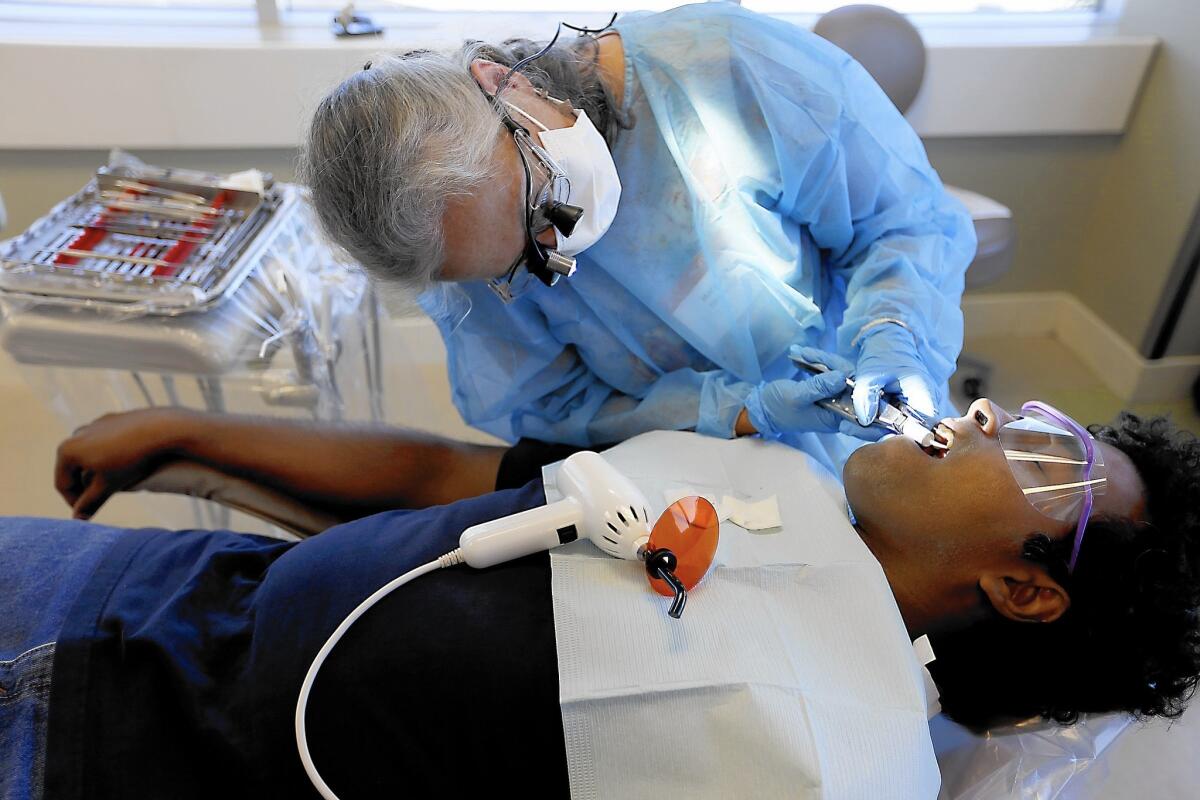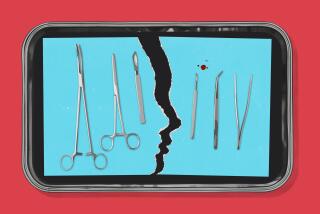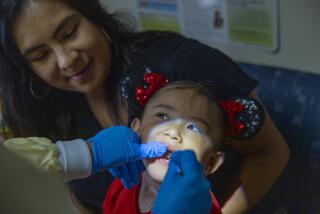For underserved patients, hygienists treating cavities is something to smile about

- Share via
In her 16 years as a dental hygienist, Marlena Shore has witnessed countless examples of the painful cavities and toothaches afflicting people who can’t afford to go to the dentist.
“You see a huge amount of tooth decay,” said Shore, who teaches dental hygiene at Cerritos College. “But you’re helpless to do anything about it.”
That is changing with a new California law that authorizes dental hygienists to treat cavities without a dentist on site by placing low-cost, temporary fillings.
Shore is one of the first dental hygienists in Southern California who will be certified to apply the fillings, called interim therapeutic restorations, under the law that took effect in January. She joined two dozen other dental hygiene educators and dentists Saturday for a two-day training program conducted by Northern California-based University of the Pacific on the campus of West Coast University in Anaheim.
The temporary fillings require no drilling or anesthetic and can be completed quickly and at a fraction of the cost of a traditional filling. By sealing off the cavity and slowly releasing fluoride, they can stop the progression of decay for several years, buying time until the tooth can be filled permanently.
The new procedure is part of a broader initiative to expand dental care by dispatching hygienists to preschools, senior centers and other locations that serve children and adults who may not have access to a dentist. In this new model of dental care, called virtual or tele-dentistry, hygienists work remotely but in consultation with dentists, who review X-rays electronically and decide which teeth should be filled.
Spearheading the effort is Paul Glassman, a professor of dental practice at the University of the Pacific who spent years developing a model for low-cost care. Interim therapeutic restorations were tested on 900 patients throughout California over six years before the new law was signed by Gov. Jerry Brown last fall.
“We hope that within a decade this is something that every hygienist will have the skills to do,” said Glassman, who led the training. “That it will become ubiquitous and a way to reach people who are not getting dental care.”
After completing the training, the hygienist educators are expected to teach the procedure to students throughout the region.
Kelly Hicklin, a dentist who teaches as an adjunct faculty member at Pacific, said she plans to train two dental hygienists at her practice in Downey. Once certified, the hygienists will be able to fill the cavities of underserved patients in elementary schools, nursing homes and other places where she said tooth decay is often “not treated and rampant.”
After classroom instruction and practice on artificial teeth, the hygienists being trained Saturday hovered over rows of dental chairs at the Anaheim campus’ fourth-story clinic to fill the teeth of volunteer patients who were offered the procedure for free. They scooped out each cavity with a tiny, metal spoon-shaped instrument and injected the hole with a toothpaste-like substance that is hardened with a blue light.
“I am so excited,” said Margaret Newville, who teaches dental hygiene at Oxnard College and hopes to use the new procedure as part of a mobile clinic for farmworkers. “I’m in a community where the demographic will really benefit.”
Nuwan Karunaratne, 37, of Costa Mesa said he was relieved to have three cavities fixed during the training.
Karunaratne has a PhD in physics and teaches part time at a community college. But he does not have dental insurance and can’t afford to pay for dental work out of pocket.
Though he would like permanent fillings someday, for now Karunaratne is just happy his financial difficulties won’t set his dental health off-course.
“This is all I have,” he said, pointing to his teeth after the procedure. “I didn’t want to compromise that.”
Twitter: @tonybarboza
More to Read
Sign up for Essential California
The most important California stories and recommendations in your inbox every morning.
You may occasionally receive promotional content from the Los Angeles Times.














